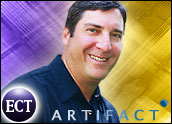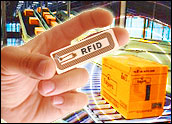The impetus for CRM development was business-to-business’s need to capture customer and prospect information, note sales, marketing and service contacts, and nurture relationships through better communication internally and externally.

These solutions, however, don’t lend themselves easily or often affordably to donor-driven organizations such as Big Brothers Big Sisters of America, city zoos, children’s museums and YMCAs.
So Kintera, a CRM developer in San Diego, created a niche system that includes a friendly interface for donors, real-time acknowledgment of donations and a wealth assessment application that segments and prioritizes prospects.
Fundraising organizations rarely have the resources to get the biggest buck out of every donor they see. Typically only mega-money donors are thanked and remembered year after year. Few nonprofits have the time or staff to devote to follow up on smaller gifts. Social CRM, therefore, asks donors to share not only contact information but their reasons for giving and interests in a cause. This captures the donor’s affinity to the cause, says David Lawson, GM of donor management at Kintera.
“We live now, though, and things, affinities, change very rapidly,” he says. “Technology enables a higher touch concept that acknowledges the discretionary dollars people spend to help others down to the lowest level donors.”
Thanking the Little Guys
“Most not-for-profit professionals have great intentions at the beginning of the year,” says Bruce Berglund, Certified Fund Raising Executive (CFRE), former national director of philanthropy and resource development for the YMCA of the USA and current partner in Triangle2, a financial development consultancy to nonprofits.
They know there will be entry-level givers, and they know they’d be remiss if they didn’t go back to those people and see if they might give more, he says. “But without a CRM application, because of life’s daily hassle, we haven’t built and managed those relationships. Of course we’ll remember the US$10,000 donor, but often with new and upgraded gifts, we don’t do so well.”
CRM can automate communication with low-level donors as well as remind development staff to engage these constituents through live contact or thank yous. “CRM is really, really relentless. Any professional needs that, particularly in fundraising,” he says. “A CRM application holds our feet to the fire.”
The 360 View
Before launching Social CRM, Kintera acquired many fund-development applications. “Kintera’s strategy is to look for best of breeds in the client server world, rapidly integrate and move them to the Web,” Lawson says. Among Social CRM’s modules: wealth assessment, advocacy, event management, e-mail management and donor management.
Big Brothers Big Sisters’ vice president of fund development used the acquired wealth assessment module when he worked for Swarthmore College. Big Brothers Big Sisters is piloting Kintera’s solution in eight of its 432 agencies now. National expects to begin using it by the end of 2006 and expects half of the agencies to be on board within four years, John Malcomb says.
National will be the keeper of the single database. Its agencies that choose to use Social CRM will have record access that displays only the fundraising history and opportunities relevant to their branch. Malcomb will see the entire donor picture — how much Jane Doe contributed to a single Big Brothers Big Sisters program, how much she contributed to her local agency, whether she gave to the national organization and if she contributed at the international level. This insight will help Malcomb decide how to allocate his fund-development resources and how to structure stewardship campaigns.
“It’s really critical for us to be customer-centric,” he says. “As an organization, we’ve really just come to see that our donors are our customers. We think about the little kids we take care of, but the families and our donors are our customers. As we acquire more and more corporate partners and repeat donors, the only way to do contact management rationally at the agency and enterprise level is through technology.”
“A lot of donors give to multiple locations within one charity. The real premise of this is to start to give that person a cohesive relationship,” Lawson says. “And if a chapter drops an account, national can pick it up.”
Of Relationships and Retention
Social CRM has signed 21 organizations since its launch in April. “None of this is going to replace face to face with top donors,” Lawson says, but Social CRM aims to retain and grow a different donor segment. It gives organizations more information about their new donors — enough to launch relationships.
“This is all about how to move people,” Berglund says of CRM for nonprofits. “Interest and capacity: Where they intersect, there’s your gift. Truly, we’re not fundraisers. We’re interest raisers. You can’t make somebody more wealthy, but you can remember the relationship, who they respect, why they contributed.”
The capture and use of this data increases donor likelihood to give again, Lawson says.
“There are a lot of ways to do good in the world, but it is a world of choice,” he says. “Organizations that want to be chosen have to be thinking about the experience. … Think about the way you treat the $25 donor to get him to give $250, $1,000, someday $1 million.”




























































